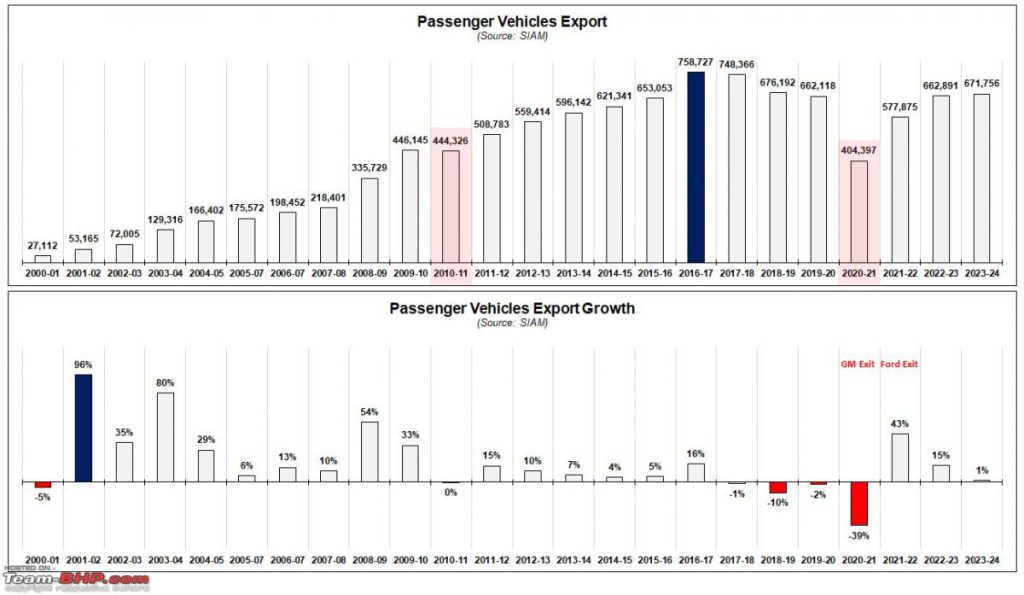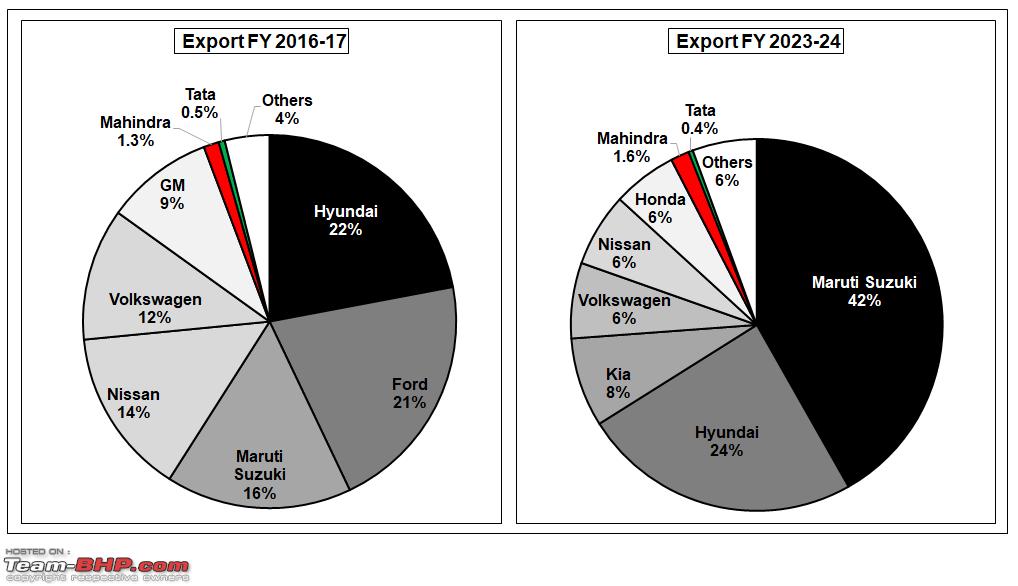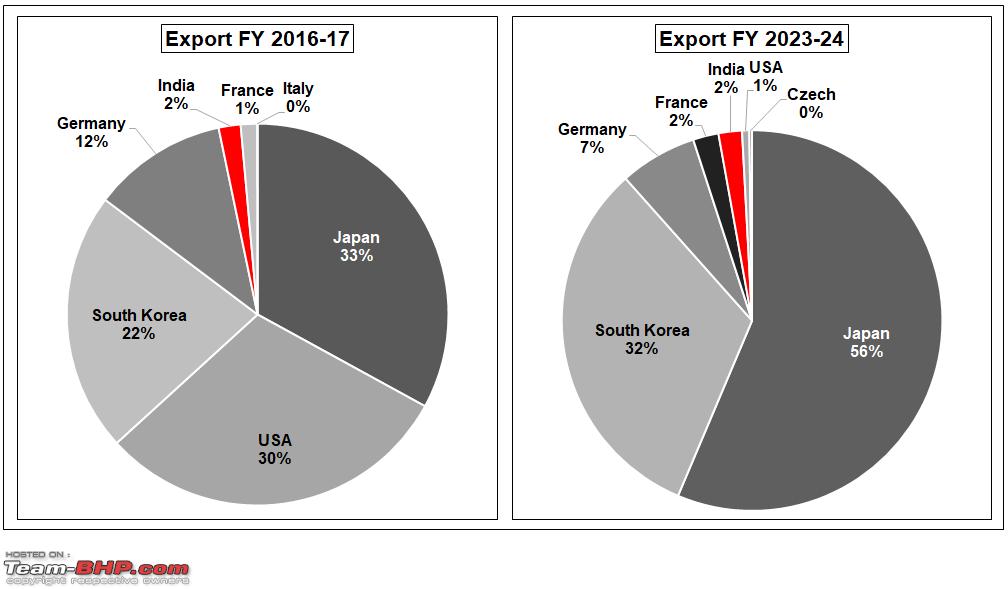Introduction to Indian Car Exports
The Indian automotive industry has always been a significant player in the global market. Despite challenges, the industry continues to adapt and grow, leveraging its manufacturing prowess to meet international demands. One striking example is the 4-door Maruti Jimny, which, despite failing to capture the Indian market, has found success through exports.

Maruti Jimny: From Domestic Failure to Export Triumph
The Maruti Jimny, a compact off-roader, was highly anticipated in India. However, the 4-door version didn’t resonate well with Indian buyers. Despite this, its robust build and off-road capabilities have made it a sought-after model in international markets. This shift highlights the unique dynamics of global automotive preferences.
Why the Maruti Jimny Failed Domestically
The Indian market’s lukewarm reception to the Maruti Jimny can be attributed to several factors:
- Preference for Compact SUVs: Indian consumers favor larger, more versatile SUVs over compact off-roaders.
- Price Sensitivity: The Jimny’s pricing didn’t align well with the expectations of value-conscious Indian buyers.
- Competition: The presence of established models like the Mahindra Thar overshadowed the Jimny.
The Export Lifeline
While the Jimny struggled domestically, its export potential has been a game-changer:
- Global Appeal: The Jimny’s rugged design and performance have made it popular in markets like Latin America and Africa.
- Production Hub: India serves as a strategic manufacturing hub, allowing Maruti Suzuki to leverage cost advantages and export the Jimny at competitive prices.

Overview of Indian Car Export Industry
India’s car export industry has evolved significantly over the years, positioning itself as a critical player in the global market.
Historical Context
In the late 90s, foreign carmakers like Hyundai and Ford established an export-oriented manufacturing base in India. This strategy mitigated the risks associated with local demand fluctuations and positioned India as a global automobile production hub.
Export Trends and Data
In FY 2023-24, India exported 6,71,756 units, a growth of 1.3% from the previous fiscal year. This figure, while modest, reflects the resilience of the industry amid global economic challenges.
Key Export Players
- Maruti Suzuki: Leading the pack with a 42% export share, Maruti Suzuki remains the largest exporter from India.
- Hyundai: Holding a 24% share, Hyundai continues to be a dominant force in the export market.
- Kia: Rapidly climbing the ranks, Kia has become the third-largest exporter, highlighting its efficient production capacity utilization.

Japanese and Korean MNCs: Dominating Indian Car Exports
Japanese and Korean multinational corporations (MNCs) dominate the Indian car export landscape, contributing 88% of the total exports.
Japanese Giants
- Maruti Suzuki: Benefiting from its majority ownership by Suzuki Motors Corporation, Maruti Suzuki has doubled its export volume over the past seven years.
- Nissan and Honda: These brands also play significant roles, with models like the Nissan Sunny being produced exclusively for export.
Korean Powerhouses
- Hyundai: Known for its consistent export volumes, Hyundai has firmly established itself in the global market.
- Kia: With impressive growth, Kia’s export strategy has significantly boosted the Korean share of Indian car exports.

Body Styles and Fuel Types in Indian Car Exports
Understanding the preferences in body styles and fuel types is crucial for grasping the dynamics of Indian car exports.
Body Styles
- Sedans: Despite waning domestic demand, sedans account for 35% of exports, indicating strong international appeal.
- Hatchbacks: Close behind, hatchbacks make up 30% of exports, with models like the Maruti Baleno leading the charge.
Fuel Types
- Petrol Engines: A staggering 98% of exported cars are petrol-only, reflecting global trends and emission regulations.
Export-Only Products: A Unique Strategy
Certain models are produced exclusively for export, showcasing India’s role as a strategic production hub.
Nissan Sunny and Mahindra KUV 100
- Nissan Sunny: Discontinued domestically, the Sunny continues to thrive in markets like Mexico and Brazil.
- Mahindra KUV 100: No longer sold in India, this hatchback finds its market in countries like Sri Lanka.
Brand-wise Export Analysis
Maruti Suzuki
Maruti Suzuki’s dominance in exports is remarkable. With models like the Baleno and Dzire, the brand continues to leverage its manufacturing capabilities to meet global demand.
Hyundai and Kia
Hyundai’s steady performance and Kia’s rapid ascent highlight the strategic importance of their Indian operations. Models like the Hyundai Verna and Kia Seltos are pivotal to their export success.
Volkswagen and Nissan
Volkswagen and Nissan export a significant portion of their production, maintaining a robust presence in international markets. The Volkswagen Virtus and Nissan Sunny are key contributors to their export volumes.
Challenges Faced by Indian MNCs
Despite their success in the domestic market, Indian MNCs like Tata and Mahindra struggle with exports.
Lack of Global Strategy
- Tata and Mahindra: These brands have not effectively leveraged their domestic success to capture international markets. Their export volumes remain stagnant at around 2%.
Comparison with Other Industries
- Tech Industry: The irony is stark when compared to their counterparts in the tech industry. Companies like TCS and Tech Mahindra contribute significantly to India’s foreign exchange reserves through exports.
Conclusion: The Road Ahead for Indian Car Exports
India’s car export industry is a testament to its manufacturing capabilities and strategic importance in the global market. While the domestic market presents unique challenges, the success of export-oriented models like the Maruti Jimny underscores the potential for growth and adaptation.
Future Prospects
To sustain and enhance their export performance, Indian car manufacturers must:
- Innovate: Focus on developing models that cater to both domestic and international tastes.
- Strategize: Formulate robust global strategies to penetrate and capture new markets.
- Collaborate: Leverage partnerships and collaborations to enhance production capabilities and meet global standards.
Final Thoughts
The journey of the Maruti Jimny from a domestic failure to an export success story encapsulates the broader narrative of the Indian car export industry. By understanding and adapting to global market demands, India can continue to strengthen its position as a key player in the global automotive landscape.


































